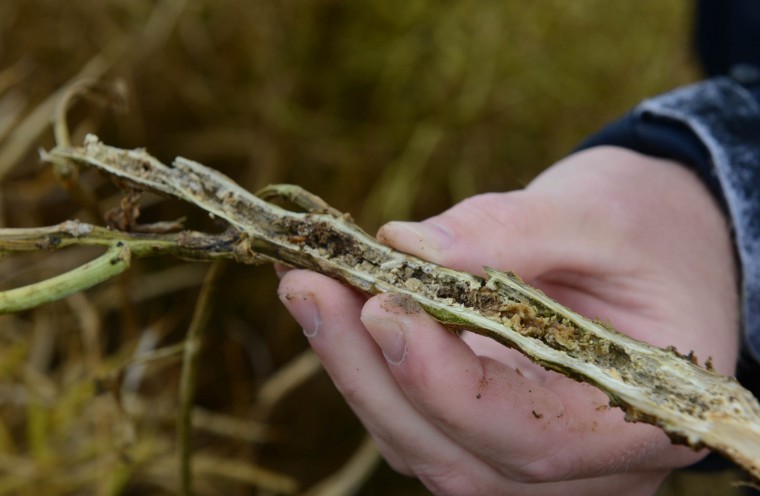Used in a programme and at the recommended rate, Revel offers excellent control of Phoma, Light Leaf Spot and Leaf and Pod Spot, without the growth regulatory effect of some fungicides.
This is a particularly useful option for those backward OSR crops that have been hit by flea beetle or the dry conditions, says independent agronomist and AICC member, Peter Cowlrick of CCC Agronomy.
“It’s really key to protect these vulnerable crops as reports of low levels of Phoma (L.maculans) start to come in with the recent unsettled weather, and which will continue to develop quickly should conditions remain unsettled into the next week or so.”
“It is essential to control the disease before it reaches the stem, as control then becomes almost impossible and stem cankers will result later in the season.”
Once the plant is infected with Phoma it takes an accumulated mean temperature of 120 day degrees (i.e. 6 days at 20˚C, or 12 days at 10˚C) for a mature spore to produce the typical leaf spot symptoms, from which mycelium migrate down the petiole of the leaf and ultimately into the stem.
“This is why priority should then be given to spraying small plants of varieties with high susceptibility to Phoma where there is a shorter distance for the mycelium to travel before reaching the stem.”
“You just don’t want anything else knocking vulnerable crops when they are at this stage.”
{in-brief}
“So, where crops are still around the 3-5-leaved stage and Phoma is just starting to creep in, I would recommend going in with 0.25 -0.3l/ha difenoconazole and up to a half dose of tebuconazole – which offers good control of both Phoma and some early Light Leaf Spot protection without too much growth regulation and is a really cost- effective option,” he recommends.
“Whilst prothioconazole also offers good Phoma control, and will possibly be the first consideration for many, it may be better to keep this back for Propyzamide timings in November to help optimise its Light Leaf spot efficacy. “
“By using a range of triazoles it means that resistance is potentially better managed.”
“I’d recommend following-up these treatments with a prothioconazole with or without tebuconazole 4-6 weeks later to cover Light Leaf Spot or at disease re-infection,” he says.
“The extra flexibility of a two spray programme is especially valuable in a season like this with crops at different growth stages and requiring different levels of growth regulation. “
“While thresholds provide valuable guidance, in practice autumn fungicide timings often depend on when the sprayer is travelling to apply other treatments, this makes it important not to miss application opportunities,” Peter adds.
Dr Bill Lankford, Life Scientific’s UK country manager points out that the reason the company has been able to bring so many products so quickly to the UK market place is the company’s ability to reverse engineer a product from the original, meaning that the resulting product is accepted as comparable by the regulatory authority,” he says.
“All of our products will have full generic registration – there are no parallel imports.
He points out that this speed of development is a considerable competitive advantage against a background of pressure on farmers to reduce their cost of production, and on generic companies to secure a return on their investment in product development in a “highly unpredictable regulatory environment”




